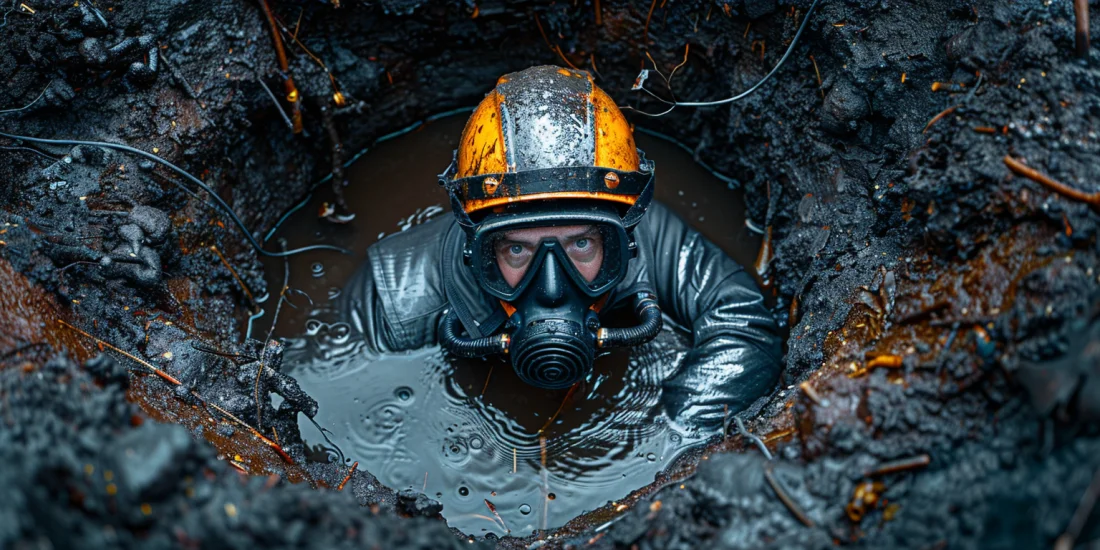Commercial construction diving is a specialized field that involves underwater construction, maintenance, and repair tasks. These divers work on various projects, including bridges, dams, oil rigs, and underwater pipelines. The job requires a combination of construction skills and diving expertise, making it a challenging yet rewarding career. Safety, precision, and the ability to work in diverse and often hazardous conditions are paramount for commercial construction divers.
Role and Responsibilities
Commercial construction divers perform a wide range of tasks underwater. Their primary responsibilities include inspecting, repairing, and constructing underwater structures. They often work with heavy machinery and tools to complete these tasks, requiring a high level of skill and training.
One of the key roles is inspection and assessment. Divers inspect underwater structures for damage or wear and assess the extent of repairs needed.
Another critical responsibility is the execution of repair and maintenance tasks. This can include welding, cutting, and assembling underwater structures. The work often requires the use of specialized equipment designed for underwater use, such as hydraulic tools and underwater welding machines.
Additionally, commercial construction divers are involved in new construction projects. They help lay foundations, install underwater pipelines, and erect structures. These tasks require precise execution to ensure the integrity and safety of the structures.
Training and Certification
Becoming a commercial construction diver requires extensive training and certification. Prospective divers must complete a commercial diving course from an accredited institution. These courses cover various aspects of diving, including safety protocols, equipment handling, and underwater construction techniques.
Certification is mandatory and is typically obtained through recognized bodies such as the Association of Diving Contractors International (ADCI) or the International Marine Contractors Association (IMCA). These certifications ensure that divers meet the industry standards for safety and competency.
In addition to basic diving certification, specialized training in underwater construction techniques is essential. This includes courses in underwater welding, cutting, and the use of hydraulic tools.
Safety and Risks
Safety is a paramount concern in commercial construction diving. The underwater environment presents numerous hazards, including limited visibility, strong currents, and the risk of decompression sickness. Divers must adhere to strict safety protocols to mitigate these risks.
Personal protective equipment (PPE) is essential for diver safety. This includes specialized diving suits, helmets, and gloves designed to protect against underwater hazards. Divers also use communication equipment to stay in contact with surface teams, ensuring coordination and safety during operations.
Regular maintenance and inspection of diving equipment are crucial to prevent malfunctions. Any equipment failure underwater can be life-threatening, so divers must ensure that all gear is in excellent condition before each dive.
Training in emergency procedures is also vital. This training helps divers respond quickly and effectively to emergencies, minimizing the risk of serious injury or death.
Technology and Equipment
Advancements in technology have significantly impacted commercial construction diving. Modern equipment and tools have improved the efficiency and safety of underwater construction tasks. Key equipment includes underwater welding machines, hydraulic tools, and remotely operated vehicles (ROVs).
Underwater welding machines are specifically designed for use in wet environments. They allow divers to perform precise welding tasks underwater, essential for repairing and constructing metal structures. Hydraulic tools, powered by pressurized fluid, provide the strength needed to cut and assemble materials underwater.
ROVs are increasingly used to support divers. These remotely operated machines can perform inspections, carry tools, and assist in complex tasks. They reduce the need for divers to spend extended periods underwater, enhancing safety and efficiency.
Industry Applications
Commercial construction divers are employed in various industries, each with unique challenges and requirements. In the oil and gas industry, divers work on offshore rigs, pipelines, and underwater drilling operations. Their tasks include inspecting and repairing rigs, installing pipelines, and maintaining underwater infrastructure.
They perform tasks such as laying foundations, inspecting underwater structures, and conducting repairs. These projects often require divers to work in challenging conditions, including murky waters and strong currents.
The maritime industry also relies heavily on commercial construction divers. They are responsible for the maintenance and repair of ships, underwater cables, and marine structures. Their work ensures the safety and functionality of maritime operations.
Key Takeaways
– Commercial construction divers inspect, repair, and build underwater structures using specialized tools and techniques.
– Extensive training and certification are required, covering safety protocols, equipment handling, and underwater construction methods.
– Safety is paramount, with strict adherence to protocols and use of personal protective equipment.
– Technological advancements, such as underwater welding machines and ROVs, have improved efficiency and safety.
– Divers work across various industries, including oil and gas, civil engineering, and maritime, each with unique challenges and requirements.



